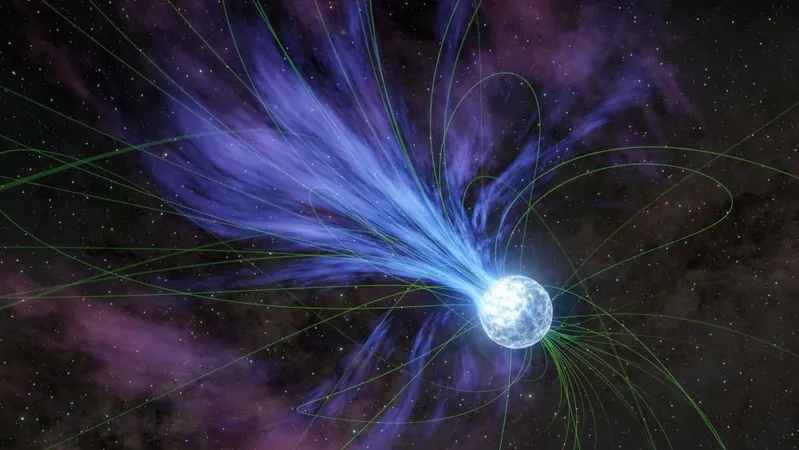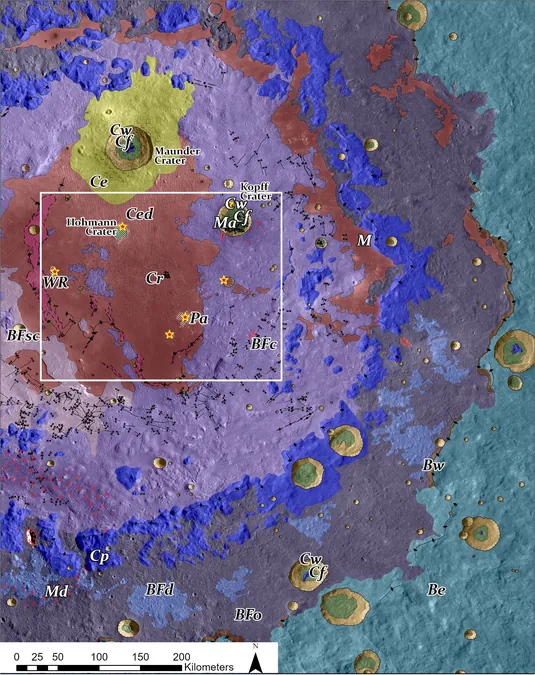
Are Cosmic Collisions Behind the Mysterious Fast Radio Bursts?
2024-11-21
Author: Mei
Introduction
Astronomers have stumbled upon an extraordinary phenomenon in the universe: fast radio bursts (FRBs). These enigmatic radio signals are so powerful that they can outshine entire galaxies, yet they last for only milliseconds. When FRBs were first detected a couple of decades ago, their origins were shrouded in mystery. Initially, researchers even wondered if they were of astronomical significance at all, due to their brief and localized nature. However, the advent of wide-field radio telescopes like CHIME has allowed us to monitor FRBs with greater frequency, leading to one prevalent theory regarding their origins: magnetars.
The Role of Magnetars
Magnetars are a specific type of neutron star that possesses incredibly strong magnetic fields. Thanks to recent advancements in observational technology, we've been able to correlate several FRBs with magnetar activity. A landmark event occurred in 2020 when a fast radio burst was detected from within our own Milky Way galaxy, aiding our understanding of these elusive signals. This particular FRB was linked to a pulsar, and scientists were able to demonstrate a correlation with a glitch in the pulsar’s rotation, lending further credence to the magnetar explanation.
Challenges in Understanding FRBs
While the magnetar theory has gained considerable traction, researchers continue to grapple with the exact mechanisms driving these powerful bursts. One widely discussed hypothesis suggests that FRBs result from magnetic realignments, akin to the flares observed on the Sun. In this model, twisted magnetic field lines on a magnetar snap into alignment, releasing immense energy. However, the brevity of FRBs poses a challenge, making it difficult for magnetic realignments to occur within the required timeframe.
The Collision Hypothesis
Recently, a provocative theory has emerged, proposing that FRBs could be the consequence of cosmic collisions. Just as some supernovae originate from neutron star collisions, interstellar bodies such as asteroids and comets could impact neutron stars, producing a tremendous electromagnetic burst. To bolster their case, researchers examined the duration of FRBs and found it resembles the distribution of solar system bodies. The timing of these bursts aligns with the potential sizes and impacts of interstellar objects.
The Mystery Continues
Yet, while these findings offer intriguing support for the collision theory, they don’t entirely unravel the mystery surrounding FRBs. Some of these bursts, known as repeaters, occur multiple times from the same source and have been observed to exhibit quasi-periodic behavior, a phenomenon that random impacts would struggle to explain. This raises the possibility that different mechanisms could be at play for repeating and non-repeating FRBs, though further investigation is required to clarify these distinctions.
Conclusion
In a universe so vast and filled with unknowns, the search for the true origins of fast radio bursts is far from over. As astronomers continue their quest to understand these cosmic enigmas, the revelations that await us could reshape our understanding of the universe – and unveil brand new mysteries along the way! What could these bursts be telling us about the fundamental workings of the cosmos? Stay tuned as the fascinating journey into the depths of space continues!


 Brasil (PT)
Brasil (PT)
 Canada (EN)
Canada (EN)
 Chile (ES)
Chile (ES)
 España (ES)
España (ES)
 France (FR)
France (FR)
 Hong Kong (EN)
Hong Kong (EN)
 Italia (IT)
Italia (IT)
 日本 (JA)
日本 (JA)
 Magyarország (HU)
Magyarország (HU)
 Norge (NO)
Norge (NO)
 Polska (PL)
Polska (PL)
 Schweiz (DE)
Schweiz (DE)
 Singapore (EN)
Singapore (EN)
 Sverige (SV)
Sverige (SV)
 Suomi (FI)
Suomi (FI)
 Türkiye (TR)
Türkiye (TR)